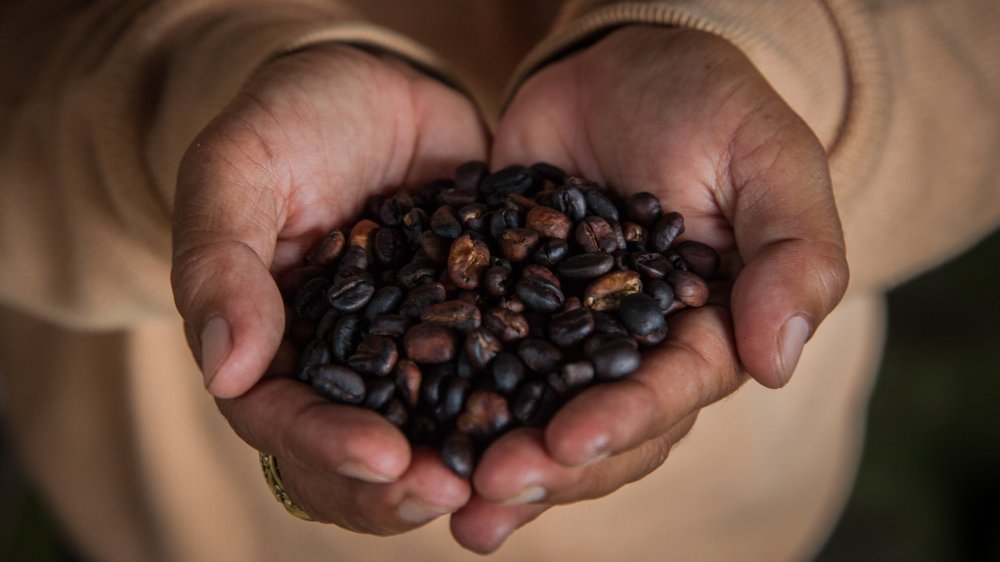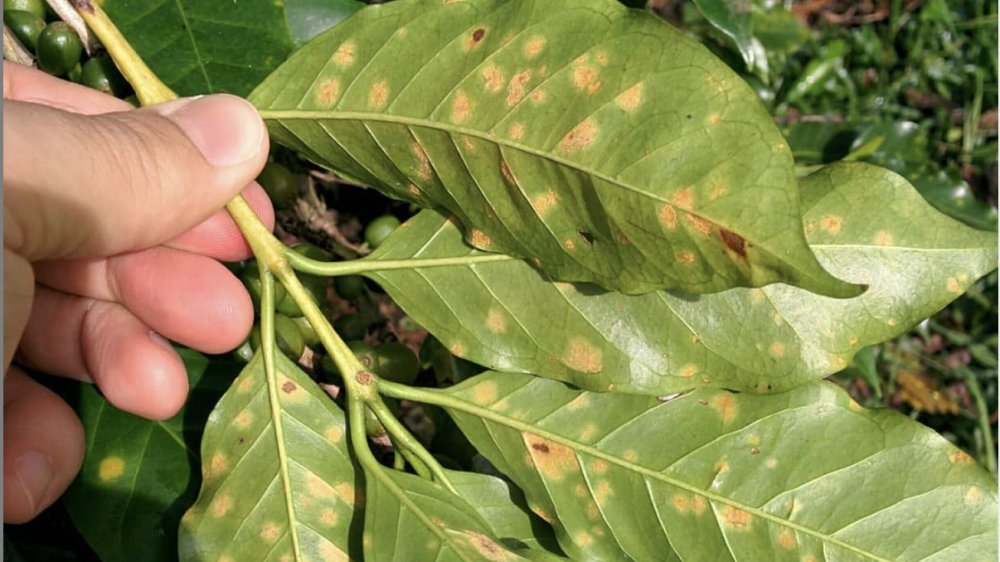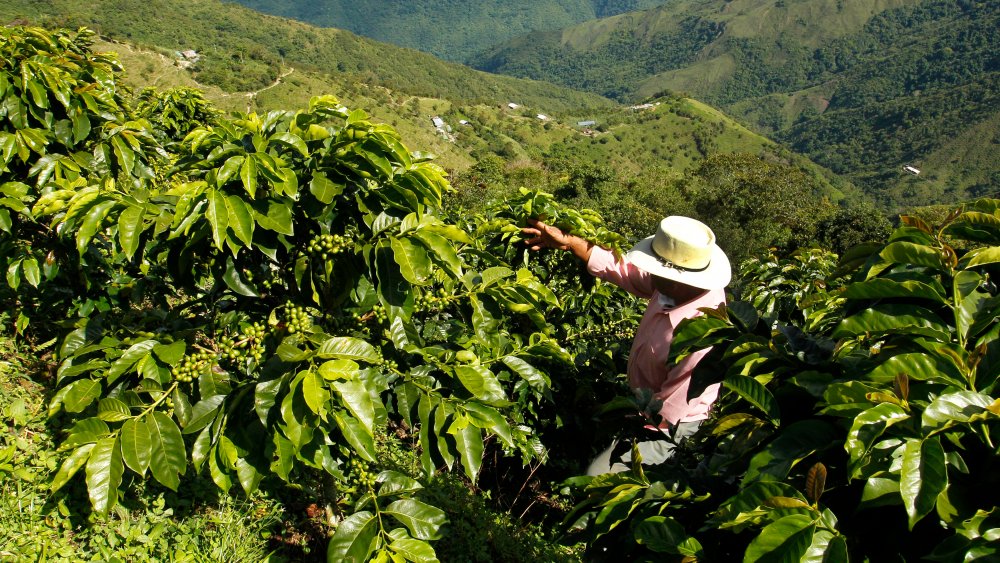How Climate Change Is Threatening The Future Of Coffee
The rust, or la roya in Spanish, is a fungus that infects coffee plants (via The Atlantic). It's not new, the first record of its debilitating effect dates back more than 150 years. By the late 19th century, when the rust had gotten really bad in sub-Saharan Africa, the Arabian Peninsula, India, Ceylon (modern-day Sri Lanka), Indonesia, and Polynesia (where coffee was then grown), coffee plants were moved across the Atlantic to Central and South America, up in the mountains and out of the reach of the fungus... or so we thought.
While it's unclear how the rust made its way across the ocean, what we know is that it did. By the 1970's, it was infecting coffee plants in Brazil, spreading west and north to Peru, Ecuador, Colombia, and up into Central America. The first generation of coffee farmers to encounter it there fought it back successfully with fungicides. However, now those fungicides aren't making an impact and the rust is spreading, destroying between 90 and 100 percent of the coffee crops it infects and making the future of the world's most popular drink (according to How Stuff Works) uncertain.
Why climate change is making coffee rust so hard to beat
The Atlantic states that the rust isn't just one specific fungus, but is made up of over 8,000 different species; more than all the other plant pathogens combined, and the reason it's so prolific? Even the farmers seem to know: "The rains have been heavier... the dry season, it's longer, and the winds are much more strong. It's due to climate change."
In some ways, this plant pandemic mirrors the one we are dealing with ourselves: early warnings were ignored, there was unfounded confidence that it wouldn't spread this far and that modern science could manage it, but the results have been devastating. In some areas of Central and South America, more than half of the land used for farming coffee has stopped producing the crop. This isn't just bad news for caffeine lovers, it's caused billions of dollars in damages and forced nearly 2 million farmers off their land, which is often too thin-soiled, forested, or steep to grow any other crops. In fact, according to current climate change predictions, up to 60 percent of wild species of coffee are now at risk of going extinct (via Science Magazine).
How farmers and snails are fighting coffee rust
There are several potential solutions to the coffee rust crisis, but many are both expensive and time-consuming. For example, breeding new species from the coffee plants that are more resistant to rough winds and uncertain rainfall could take between 10 and 25 years, and specialized fungicides are often too expensive for small farmers (keep in mind that small farms in poor economies make up more than 90 percent of the world's coffee). However, there is some hope.
In Southeast Asia, there is an invasive species of snail that eats the rust off coffee plants, effectively cleaning the leaves of the deadly spores. This could mean better crop yield for small farmers, however it's possible the spores are still alive when the snails excrete them, so The New York Times says more research is needed. In the meantime, farmers are fighting the rust themselves — some even banding together into "Anti-Rust Brigades", spending a percentage of their premium to fight the epidemic with low-cost materials and equipment to prevent future coffee production shortages (via Fair Trade Certified).


